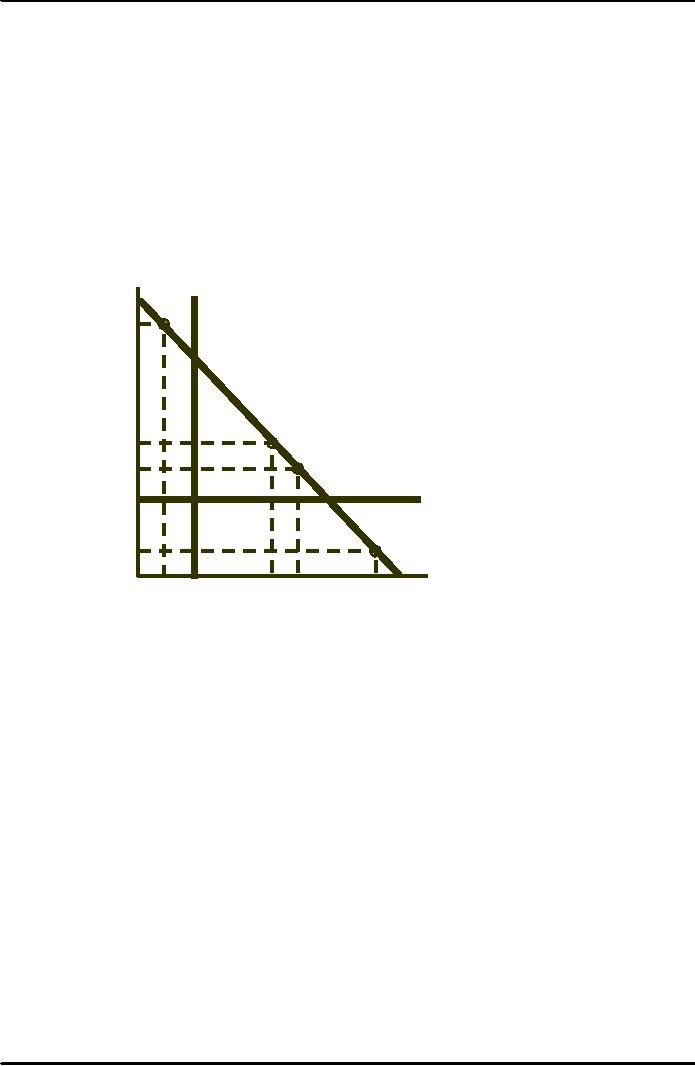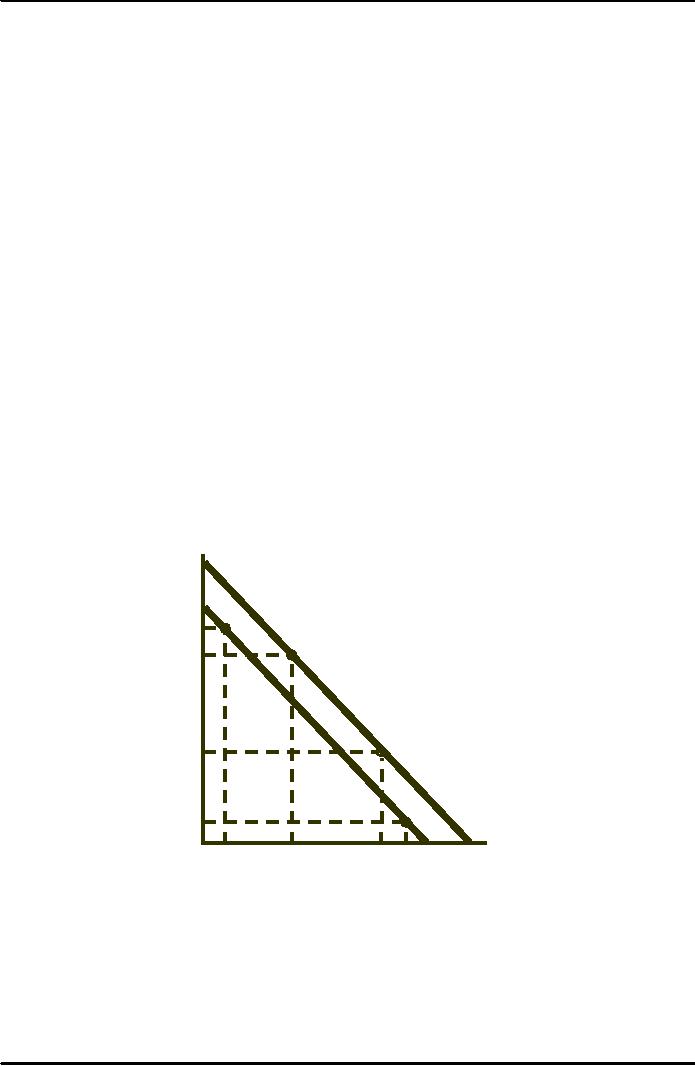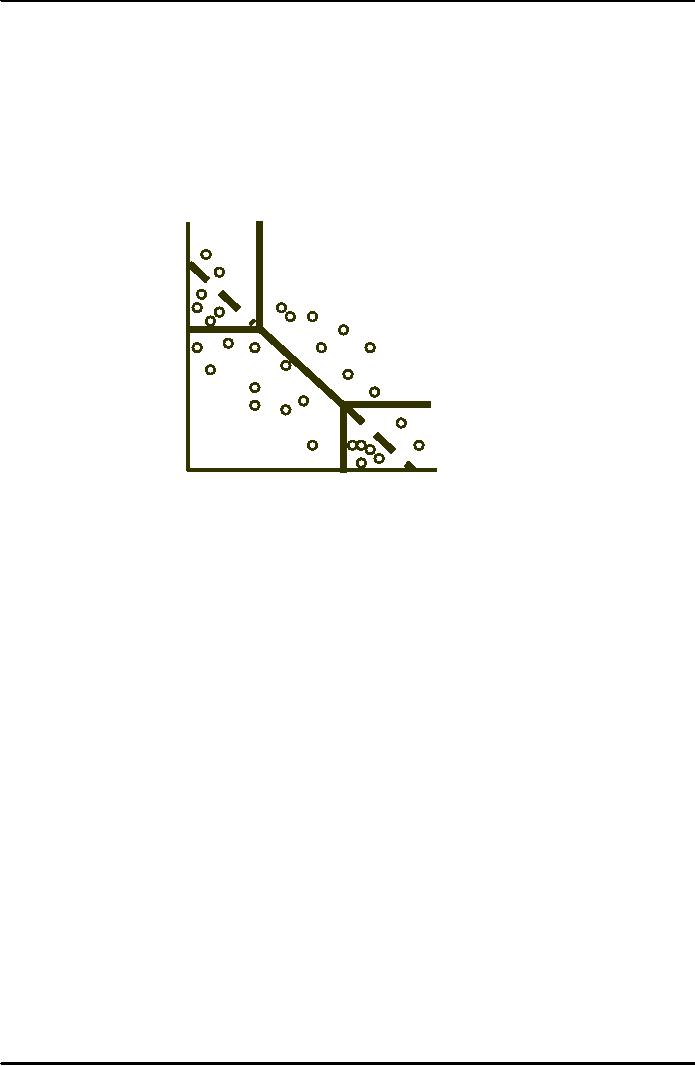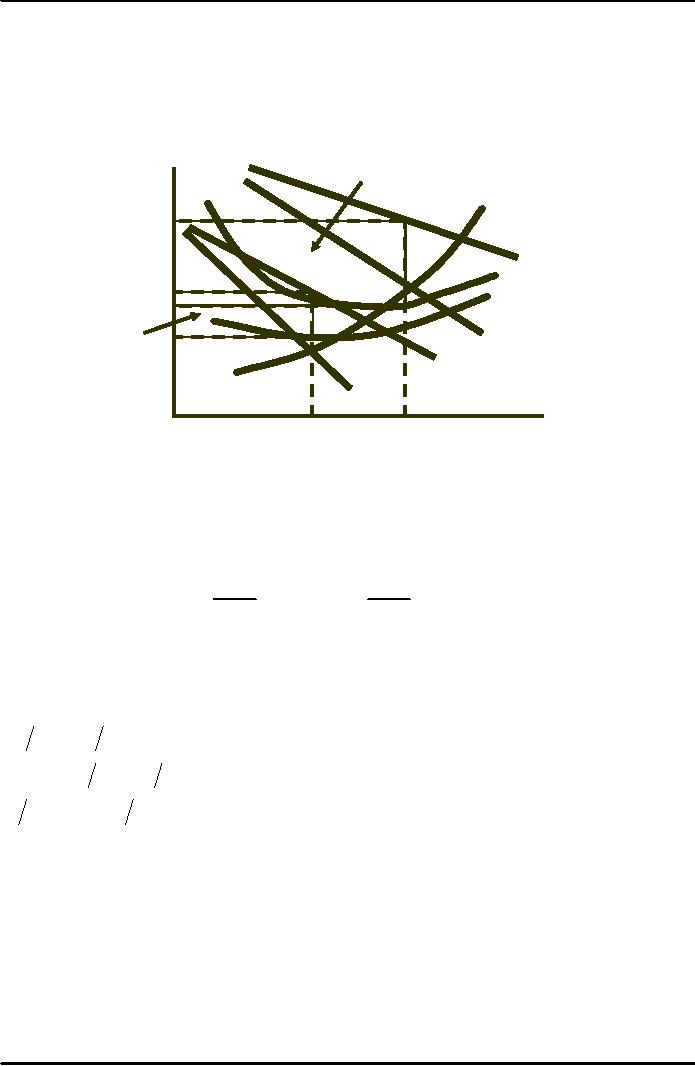 |

Microeconomics
ECO402
VU
Lesson
38
Bundling
Mixed
Bundling
Selling
both as a bundle and
separately
Pure
Bundling
Selling
only a package
Mixed
Versus Pure
Bundling
C1 =
MC1
r2
C1 =
20
With
positive marginal
costs,
mixed bundling
100
A
may
be more profitable
than
pure bundling.
90
80
Consumer
A, for
example, has
70
a
reservation price for good
1
that
is below marginal cost
c1.
With
mixed bundling, consumer
A
60
B
is
induced to buy only good 2,
while
consumer
D is
induced to buy only good
1,
50
C
reducing
the firm's cost.
40
C2 =
MC2
30
C2 =
30
20
D
10
r1
10
20 30 40 50 60 70 80 90 100
Mixed
vs. Pure Bundling
Scenario
Perfect
negative correlation
Significant
marginal cost
Observations
Reservation
price is below MC for some
consumers
Mixed
bundling induces the
consumers to buy only goods
for which their
reservation
price
is greater than MC
Bundling
Example
Sell
Separately
Consumers
B,C,
and
D buy
1 and A
buys
2
Pure
Bundling
Consumers
A,
B, C, and
D buy
the bundle
Mixed
Bundling
Consumer
D
buys
1, A
buys
2, and B
& C buys
the bundle
174

Microeconomics
ECO402
VU
P1
P2
PB
Profit
Sell
separately
$50
$90
----
$150
Pure
bundling
----
----
$100
$200
Mixed
bundling
$89.95
$89.95
$100
$229.90
C1 =
$20
C2 =
$30
Sell
Separately
3($50 -
$20) + 1($90 - $30) =
$150
Pure
Bundling
4($100 -
$20 - $30) = $200
Mixed
Bundling
($89.95 -
$20) + ($89.95 - $30) -
2($100 - $20 - $30) =
$229.90
C1 =
$20
C2 =
$30
Question
If MC = 0, would
mixed bundling still be the
most profitable strategy
with perfect negative
correlation?
Mixed
Bundling with Zero Marginal
Costs
r2 120
In
this example, consumers
B and
C
are
willing to pay $20 more for
the bundle
than
are consumers A
and
D.
With
100
mixed
bundling, the price of the
bundle
A
can
be increased to $120. A
& D can
be
9
B
charged
$90 for a single
good.
80
60
C
40
20
D
1
r1
1
80
9
20
40
60
100
120
P1
P2
PB
Profit
Sell
separately
$80
$80
----
$320
Pure
bundling
----
----
$100
$400
Mixed
bundling
$90
$90
$120
$420
175

Microeconomics
ECO402
VU
Bundling
in Practice
Automobile
option packages
Vacation
travel
Cable
television
Mixed
Bundling in Practice
Use of
market surveys to determine
reservation prices
Design a
pricing strategy from the
survey results
r2
The
dots are estimates of
reservation
prices for a
PB
representative
sample of
consumers.
The
firm can first choose a
price
for
the bundle and then
try individual
P2
prices
P1 and
P2 until
total profit
is
roughly maximized.
r1
P1
PB
The
Complete Dinner vs. a la
Carte:
A
Restaurant's Pricing
Problem
Pricing
to match consumer preferences
for various
selections
Mixed
bundling allows the customer
to get maximum utility from
a given expenditure by
allowing
a greater number of
choices.
Bundling
Tying
Practice of
requiring a customer to purchase
one good in order to
purchase another.
Examples
Xerox
machines and the
paper
IBM
mainframe and computer
cards
Allows
the seller to meter the
customer and use a two-part
tariff to discriminate
against
the
heavy user
McDonald's
Allows
them to protect their brand
name.
Advertising
Assumptions
Firm
sets only one
price
Firm
knows Q(P,A)
How
quantity demanded depends on
price and advertising
176

Microeconomics
ECO402
VU
Effects
of Advertising
AR
and MR are
If
the firm advertises, its
average
average
and marginal
and
marginal revenue curves
shift
revenue
when the firm
to
the right -- average
costs
doesn't
advertise.
rise,
but marginal cost
does
not.
�1
$/Q
MC
P1
AR'
AC'
P0
AC
�0
MR'
AR
MR
Quantity
Q0
Q1
Advertising
�
= PQ
(
P
,
A
) -
C
(
Q
) -
A
ΔQ
ΔQ
MR
Ads =
P
=
1
+
MC
=
full
MC of adv.
ΔA
ΔA
Choosing
Price and Advertising
Expenditure
A
Rule of Thumb for
Advertising
(
A
Q)(ΔQ
ΔA) =
EA = Adv.
elasticity of demand
(P
-
MC
)
P
= -1
EP
A
PQ = -(EA EP ) = Rule
of Thumb
To maximize
profit, the firm's
advertising-to-sales ratio should be
equal to minus the
ratio
of the advertising and price
elasticities of demand.
R(Q) = $1
million/yr
$10,000
budget for A (advertising--1% of
revenues)
EA = .2
(increase budget $20,000,
sales increase by 20%
EP = -4
(markup price over MC is
substantial)
Question
Should
the firm increase
advertising?
177

Microeconomics
ECO402
VU
YES
A/PQ =
-(2/-.4) = 5%
Increase
budget to $50,000
Questions
When EA is
large, do you advertise more
or less?
When EP is
large, do you advertise more
or less?
Advertising:
In Practice
Estimate
the level of advertising for
each of the firms
Supermarkets
EP=
-10; EA
= 0.1 to
0.3
Convenience
stores
EP=
-5; EA
= very
small
Designer
jeans
EP=
-3 to -4;
EA=
0.3 to
1
Laundry
detergents
EP=
-3 to -4;
EA=
very
large
178
Table of Contents:
- ECONOMICS:Themes of Microeconomics, Theories and Models
- Economics: Another Perspective, Factors of Production
- REAL VERSUS NOMINAL PRICES:SUPPLY AND DEMAND, The Demand Curve
- Changes in Market Equilibrium:Market for College Education
- Elasticities of supply and demand:The Demand for Gasoline
- Consumer Behavior:Consumer Preferences, Indifference curves
- CONSUMER PREFERENCES:Budget Constraints, Consumer Choice
- Note it is repeated:Consumer Preferences, Revealed Preferences
- MARGINAL UTILITY AND CONSUMER CHOICE:COST-OF-LIVING INDEXES
- Review of Consumer Equilibrium:INDIVIDUAL DEMAND, An Inferior Good
- Income & Substitution Effects:Determining the Market Demand Curve
- The Aggregate Demand For Wheat:NETWORK EXTERNALITIES
- Describing Risk:Unequal Probability Outcomes
- PREFERENCES TOWARD RISK:Risk Premium, Indifference Curve
- PREFERENCES TOWARD RISK:Reducing Risk, The Demand for Risky Assets
- The Technology of Production:Production Function for Food
- Production with Two Variable Inputs:Returns to Scale
- Measuring Cost: Which Costs Matter?:Cost in the Short Run
- A Firm’s Short-Run Costs ($):The Effect of Effluent Fees on Firms’ Input Choices
- Cost in the Long Run:Long-Run Cost with Economies & Diseconomies of Scale
- Production with Two Outputs--Economies of Scope:Cubic Cost Function
- Perfectly Competitive Markets:Choosing Output in Short Run
- A Competitive Firm Incurring Losses:Industry Supply in Short Run
- Elasticity of Market Supply:Producer Surplus for a Market
- Elasticity of Market Supply:Long-Run Competitive Equilibrium
- Elasticity of Market Supply:The Industry’s Long-Run Supply Curve
- Elasticity of Market Supply:Welfare loss if price is held below market-clearing level
- Price Supports:Supply Restrictions, Import Quotas and Tariffs
- The Sugar Quota:The Impact of a Tax or Subsidy, Subsidy
- Perfect Competition:Total, Marginal, and Average Revenue
- Perfect Competition:Effect of Excise Tax on Monopolist
- Monopoly:Elasticity of Demand and Price Markup, Sources of Monopoly Power
- The Social Costs of Monopoly Power:Price Regulation, Monopsony
- Monopsony Power:Pricing With Market Power, Capturing Consumer Surplus
- Monopsony Power:THE ECONOMICS OF COUPONS AND REBATES
- Airline Fares:Elasticities of Demand for Air Travel, The Two-Part Tariff
- Bundling:Consumption Decisions When Products are Bundled
- Bundling:Mixed Versus Pure Bundling, Effects of Advertising
- MONOPOLISTIC COMPETITION:Monopolistic Competition in the Market for Colas and Coffee
- OLIGOPOLY:Duopoly Example, Price Competition
- Competition Versus Collusion:The Prisoners’ Dilemma, Implications of the Prisoners
- COMPETITIVE FACTOR MARKETS:Marginal Revenue Product
- Competitive Factor Markets:The Demand for Jet Fuel
- Equilibrium in a Competitive Factor Market:Labor Market Equilibrium
- Factor Markets with Monopoly Power:Monopoly Power of Sellers of Labor